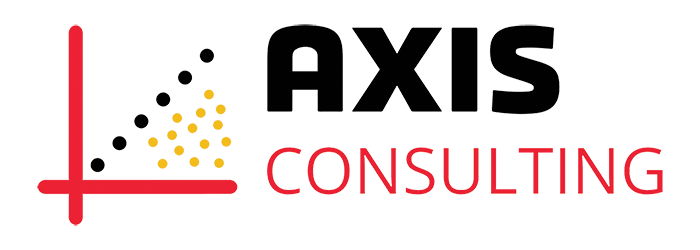As a follow-up to my previous blog “Building Trust with NICE: An Inside View of the Market Access Journey”, below is a deeper dive into some of the key engagement touchpoints mentioned in the blog. This includes scoping, decision problem, checkpoint, clarification, technical engagement, committee, and post-committee meetings.
Touchpoint # 1: Scoping
This step is to ensure the scope and remit of the health technology being evaluated by NICE have been properly defined, to address issues raised by stakeholders, and to ensure the PICO (population, intervention, comparator, and outcomes) framework is clear and appropriate. This is usually done via consultation, where companies and other interested parties can review documents and submit comments. This step can sometimes include attending a workshop where parties can meet to discuss these issues together, although this is typically held for more complex topics.
Generally, this phase of the process is non-contentious, as the anticipated marketing authorisation or the pivotal clinical trial(s) provide a strong and objective steer regarding the appropriate PICO. However, given the provisional nature of the marketing authorisation during this stage, and the complexity of the treatment pathway outside of clinical trials, there remains a degree of subjectivity for decision-making, particularly for comparators.
One area that I have observed on occasion to become contentious is the debate about whether a medicine was eligible for consideration under the highly specialised technology (HST) process. HST is reserved for particularly rare diseases and thus has a higher cost-effectiveness threshold. This is designed to incentivise pharmaceutical companies to develop treatments for underserved populations, but it can bring a higher financial burden for the NHS. As such, NICE must only route those topics where it is truly appropriate, thus why such strict qualification criteria exist.
Touchpoint # 2: Decision problem meeting
These meetings bring together NICE, an external assessment group (EAG) and the company to discuss the company’s proposed approach in its submission of evidence to NICE. The company will walk NICE and the EAG through its plan for the PICO as well as the modelling approach. This is an ideal opportunity for the submitting company to ask questions of NICE and the EAG about their intended approach e.g., whether a cost-comparison approach would be suitable. It is also a great opportunity for the submitting company to give an early heads-up if they anticipate anything that might be of interest, such as whether the company intends to submit a discounted price, whether additional evidence might become available during the appraisal, or to flag to the EAG if the modelling or statistical analyses are looking particularly complex.
Touchpoint # 3: Checkpoint meeting
These must be requested by the company, and from my experience, these are not held too often. Usually because they are not needed, a lack of awareness of this meeting opportunity, or the company is just too busy. The purpose of the checkpoint meeting is to allow companies to “check in” with NICE post-decision problem meeting, to ask NICE any questions that have since arisen, or to get advice on their approach so far. While these can be useful ways to maintain good relations, my advice to companies is only to attend if there are genuine issues to discuss.
Touchpoint # 4: Clarification meeting
When the company submits its HTA submission, NICE and the EAG will draw up their questions for the company. All parties go through the questions to make sure the company is completely clear what NICE/the EAG wants and why, and which questions are priorities for the EAG. The company later submits a written response.
Touchpoint # 5: Technical Engagement
This is a slightly more complex meeting that was introduced a few years ago to try to resolve issues before committee meetings. However, NICE has recently made these meetings optional, and will carry an additional charge in addition to the main charge for the evaluation from April 2024. This introduces a financial and time consideration element as standard timelines and charges do not include technical engagement. As such, if technical engagement is required, the timelines must be amended, and extra resources will be needed.
Touchpoint # 6: Committee meeting
This is the most important part of the process, where a multidisciplinary committee comprising patient and clinical representatives, health economists, statisticians, and others, meet to discuss whether the clinical and cost-effectiveness evidence supports a recommendation for use in the NHS. Representatives from the EAG and the pharmaceutical company are invited to the first part of the meeting, which is held in public, and may be asked to respond to questions such as why certain assumptions have been made in the model, or to state if there have been any factual inaccuracies in the discussions. Patients and clinicians are also invited to provide key contextual information such as the impact of the disease, or to describe the treatment pathway. A confidential second part of the meeting is subsequently held, where the committee makes its recommendation. Generally, these are very collaborative meetings in which everyone works towards the same goal of making sure the health technology receives a fair assessment.
Touchpoint # 7: Post-committee
Meetings post-committee are dependent on whether a company receives a positive recommendation or if unresolved issues persist. After the committee meeting, the NICE team will communicate with the company to inform them of the outcome, whether positive or negative.
The commercial and managed access teams at NICE, who provide excellent and proactive support throughout the appraisal journey, can be particularly important teams to work with at this stage. Representatives from the pharmaceutical company would need to liaise with these teams where price negotiations are required, or if the committee deems a period of managed access (i.e., a temporary recommendation whilst further evidence is collected) might be relevant.
Summary
There are numerous formal opportunities for additional engagement throughout the appraisal journey, so it is important to prepare for and make the most of these, as well as to listen to guidance from the NICE team. It helps if you can limit discussions and formal submissions to key touchpoints, as it keeps a clearer ‘story’ of what happened and at what timepoint for when it gets presented to the committee. However, in my experience, the NICE team are always happy to help wherever possible when there are ad-hoc queries, but these do need to be framed in a particular manner.

